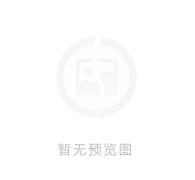

欧亚煤炭市场报告2010-3EURACOAL-Market-Report-2010-3(2010)
- 资料类别:
- 资料大小:
- 资料编号:
- 资料状态:
- 更新时间:2021-09-09
- 下载次数:次
2010年上半年,全球煤炭市场增长了67吨,这是一个巨大的增长,但与经济危机前相比,这个数字仍然很低。然而在夏末,市场略有下跌。主要的市场驱动力是焦煤。随着欧洲、南北美洲、日本和韩国经济的复苏,中国仍是一个强大的进口国。世界煤炭贸易动力煤(见表2)动力煤市场持续增长。像南非和哥伦比亚这样的“经典”大西洋供应商正越来越多地向太平洋市场供货。2010年前8个月,中国从南非(3吨)和哥伦比亚(3吨)进口了大量的蒸汽煤。从2010年1月到8月,中国总共进口了107吨,而去年同期进口了78吨。中国2009年进口总量为127吨,2010年进口总量可能达到150吨。在失去中国市场后,只有澳大利亚减少了对太平洋地区的出口。中国目前正从南非和哥伦比亚进口蒸汽煤。预计环太平洋地区的贸易将进一步增长。b)大西洋市场供应大西洋市场,而保持稳定,总增加4吨。需求依然疲软,只有南非和哥伦比亚可以实现出口增加(3吨),而俄罗斯出口降低了2太。南非预计将达到63量65吨year.2结束。焦煤供应(见表3)2010年前6个月焦煤贸易增加了41吨,其中澳大利亚(+20吨)和美国(+13吨)是主要参与者。根据需求,澳大利亚能够从蒸汽煤转向焦煤出口。加拿大增加了5吨,俄罗斯增加了2吨,中国增加了1吨。这种增长部分是由于欧洲钢铁工业的复苏,但也由于来自中国、韩国和日本的需求增加。增加的另一个原因是补充库存。因此,预计今年下半年的增长将会放缓。蒙古通过陆路向中国运送了约8吨焦煤,这使澳大利亚失去了部分向中国运送焦煤的机会。中国正在使其进口商品多样化,并越来越多地从蒙古、俄罗斯和美国进口焦煤,而牺牲了澳大利亚的利益。价格演变(见表1)a)动力煤价格b)炼焦煤和焦炭价格炼焦煤价格目前正按季度确定,在经历了2009年的疲软之后,今年价格将继续上涨,预计涨幅将更大。PCI和半软焦煤跟随焦煤价格的演变。4所示。焦炭FOB中国的价格目前在400美元左右,这个价格包括了40%的出口税。5。运费率在2008年达到峰值后大幅下降,目前为10‐20美元/吨,这是由于新建造的散货船增加了2009年(+10%)和2010年(15‐16%)的船队运力。6。在2009年发展了10%的散装运输船队之后,2010年的发展速度可能会达到15‐16%。从1月到9月,运力增长了大约12%。主要增加的是约28米宽的好望角型船只。2010年9月底,总容量约为517万吨,而2009年底为462万吨。大宗运输船队的强劲发展和世界经济增长的疲软可能会使运费保持在目前的水平。
WORLD MARKET During the first half of 2010 the world coal market grew by 67 Mt, which is a substantial increase but compared to the years before the economic crisis, the figure is still low. However at the end of the summer, the market decreased slightly. The main market driver is coking coal. China remains a strong importer, together with the revival of the economy in Europe, South and North America, Japan and Korea. WORLD COAL TRADE 1. STEAM COAL (see Table 2) The market for steam coal continues to grow. “Classic” Atlantic suppliers like South Africa and Colombia are delivering increasing quantities to the Pacific market. In the first eight months of 2010 China imported considerable quantities of steam coal from South Africa (3 Mt) as well as from Colombia (3 Mt). Altogether China imported 107 Mt from January to August 2010, against 78 Mt during the same period last year. China’s total imports in 2009 amounted to 127 Mt. In 2010 imports could amount to 150 Mt.a) Pacific Market The Pacific Market grew by 22 Mt, with Indonesia steadily increasing exports (+26 Mt). Only Australia decreased exports to the Pacific having lost markets in China, which is now importing steam coal from South Africa and Colombia. Further trade increase is expected in the Pacific Rim. b) Atlantic Market supply The Atlantic Market stayed rather stable, with a total increase of 4 Mt. The demand remained weak, only South Africa and Colombia could achieve export increases (both 3 Mt), whilst Russia decreased exports by 2 Mt. South Africa is expected to reach a total of 63‐65 Mt at the end of the year.2. COKING COAL SUPPLY (see Table 3) Coking coal trade increased by 41 Mt in the first six months of 2010 with Australia (+20 Mt) and USA (+13 Mt) being the major players. Depending on demand, Australia is able to switch from steam coal to coking coal exports. Canada increased exports by 5 Mt, Russia by 2 Mt and China by 1 Mt. This growth is partly due to the comeback of the European steel industry but also to increasing demands from China, South Korea and Japan. Another reason for this increase is the replenishing of stocks. Growth in the second half of the year is therefore expected to be lower. Mongolia delivers some 8 Mt of coking coal to China by land, making Australia lose a part of its coking coal deliveries to China. China is diversifying its imports and increasingly importing coking coal from Mongolia, and also from Russia and the USA at the expense of Australia.3. PRICE EVOLUTION (see Table 1) a) Steam Coal Prices b) Coking Coal and Coke Prices Coking coal prices are now being determined on a quarterly basis and after a weak year in 2009, they are getting higher this year and are expected to grow even more. PCI and semi‐ soft coking coal are following the price evolution of coking coal. 4. EVOLUTION OF COKE PRICES FOB CHINA The coke price fob China is currently traded at some 400 US$, a price which includes an export tax of 40 %. 5. FREIGHT RATES Freight rates came dramatically down after a peak in 2008 and are now between 10‐20 US$/t due to new‐build of bulk carriers, with increased fleet capacities in 2009 (+10%) and 2010 (15‐16%). 6. DEVELOPMENT OF THE BULK TRANSPORT FLEET After a 10 % development of the bulk transport fleet in 2009, the development rate will probably reach 15 ‐ 16% in 2010. Between January and September, capacity increased by approximately 12%. The major increase was constituted by capesize vessels with approximately 28 M Dwt. At the end of September 2010 the overall capacity was approximately 517 M Dwt against 462 M Dwt at the end of 2009. The strong development of the bulk transport fleet and the somewhat weaker growth of the world economy might maintain freight rates at their current level.
-
化学工程手册(第三版套装5册第1卷2卷3卷4卷5卷)袁渭康 王静康 费维扬 欧阳平凯 著 2021-09-09
-
石油化工自动控制设计手册(第四版) 黄步余 化工出版社 2020年 2021-09-09
-
化工过程模拟实训——Aspen Plus教程(第二版)孙兰义 化学工业出版社 2017年 2021-09-09
-
化工装置实用操作技术指南 韩文光2001年化学工业出版社 2021-09-09
-
HAZOP分析方法及实践 粟镇宇 化学工业出版社2018年 2021-09-09
-
工业除尘设备设计手册 张殿印 申丽 化工出版社 2012年 2021-09-09
-
回转窑(设计、使用与维修)沈阳铝镁设计院、长沙有色冶金设计院共同编写 2021-09-09
-
加拿大煤炭开采Coal Mining in Canada 2021-09-09
-
化工节能技术手册 王文堂 2006年化学工业出版社 2021-09-09
-
年终总结新年计划工作汇报PPT模板 2021-09-09

